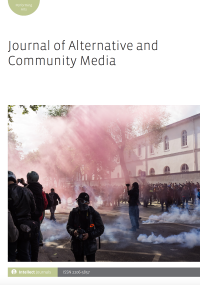
Full text loading...

Sustainability is a key issue for local and community media in the Global South as well as the Global North, albeit in different ways. After identifying significant gaps in the sustainability literature, the article presents and discusses a taxonomy of ‘models’ – the relationships that arise around different dominant sources of revenue: commercial, patronage, state, donor and community. Although the models operate in all contexts, particular dynamics develop in situations of poverty and marginalization. Drawing mainly on literature from Africa and other parts of the Global South, it is argued that a broadly political economy approach surfaces issues of power and dependency in each model. The models serve as analytical tools that enable better understanding of the vulnerabilities of media for marginalized communities, where a lack of alternatives gives them disproportionately greater importance. Important new areas of research into issues of power in local and community media are suggested, including ways to reduce the vulnerabilities identified.

Article metrics loading...

Full text loading...
References


Publication Date:
https://doi.org/10.1386/jacm_00111_1 Published content will be available immediately after check-out or when it is released in case of a pre-order. Please make sure to be logged in to see all available purchase options.